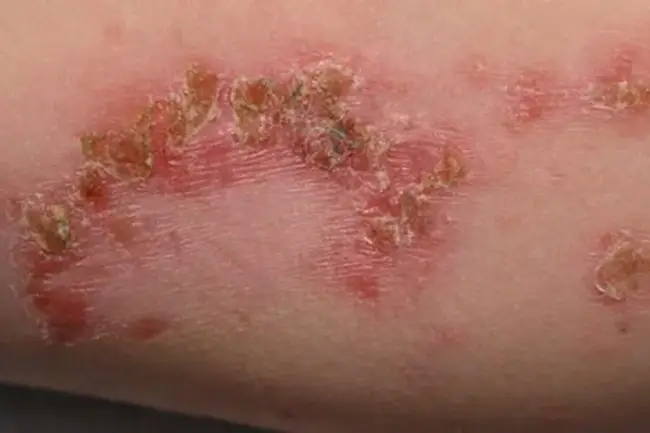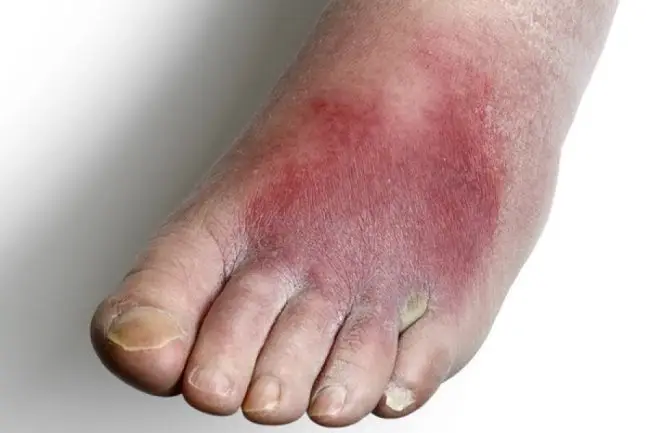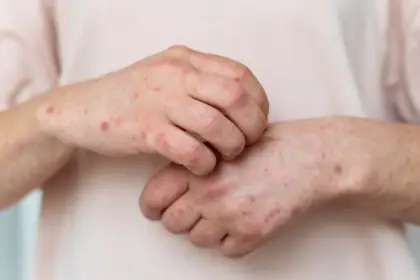Impetigo is a common and highly contagious skin infection that often affects children but can also impact adults.
Mainly it’s known for its distinctive red sores, this infection can spread rapidly through direct contact or shared items.
In this article, we’ll discover the early signs, exploring its causes, symptoms, and preventive measures to help you understand and manage this condition effectively.
Overview of Impetigo
What is Impetigo?
It is a bacterial skin infection primarily caused by Staphylococcus aureus and Streptococcus pyogenes. It manifests in two primary forms: non-bullous impetigo, characterized by crusty sores, and bullous impetigo, which presents with larger blisters. This infection is not only unsightly but can also lead to discomfort and itching, making early detection and treatment crucial.
Early Signs and Symptoms
Red Sores or Blisters: These can appear anywhere on the body but are commonly found around the nose, mouth, and extremities.
Itching and Irritation: The affected area may feel itchy or tender, often leading to scratching and further spread of the infection.
Honey-Colored Crusts: As the sores burst, they leave behind a yellowish-brown crust, a hallmark of impetigo.
How to Recognize Impetigo?
- Swelling: The surrounding skin can become swollen and inflamed.
- Pus-Filled Blisters: Particularly in bullous impetigo, larger blisters filled with clear or yellowish fluid can develop.
- Spreading Rash: The infection can quickly spread to other parts of the body or to other individuals through contact.
Types of Impetigo
Bullous Impetigo
It is less common and typically affects infants and young children. It is characterized by large, fluid-filled blisters that can appear on various parts of the body, including the trunk, arms, and legs. These blisters can be painful and may lead to significant discomfort.
Ecthyma Impetigo
Ecthyma is a more severe form that penetrates deeper into the skin, often resulting in ulcer-like sores. This type can lead to scarring and is more common in individuals with compromised immune systems or those living in unsanitary conditions.
Causes of Impetigo
Copyright:diseasesguide.com
Bacterial Infection
The primary cause is bacterial infection, with Staphylococcus aureus being the most common culprit. The bacteria enter the body through minor cuts, insect bites, or other skin injuries, leading to infection.
Factors Contributing to Impetigo
Several factors can increase the likelihood of developing it:
- Close Contact: Living in close quarters or participating in activities that involve skin-to-skin contact can facilitate the spread of the infection.
- Poor Hygiene: Inadequate handwashing and poor personal hygiene practices can increase the risk of impetigo.
- Warm, Humid Climates: Bacteria thrive in warm and moist environments, making it more prevalent in such conditions.
Risk Factors that may affect you
Who is at Risk?
While anyone can contract it, certain groups are more susceptible:
- Children: Due to their close contact in schools and playgrounds, children are particularly vulnerable.
- Athletes: Those participating in contact sports or using shared equipment are at increased risk.
- Individuals with Weakened Immune Systems: Conditions that compromise the immune system, such as diabetes or HIV, can make individuals more susceptible.
Complications Associated with Impetigo
Copyright:diseasesguide.com
Potential Complications
While it is generally not serious, complications can arise if left untreated:
- Cellulitis: This deeper infection of the skin can occur, leading to more severe symptoms and requiring more aggressive treatment.
- Kidney Problems: In rare cases, the bacteria can lead to post-streptococcal glomerulonephritis, a condition affecting the kidneys.
How is Impetigo Diagnosed?
Diagnosing it typically involves a physical examination of the affected area. In some cases, a culture of the sores may be taken to identify the specific bacteria responsible and to determine the most effective treatment.
Home Remedies
In addition to medical treatments, certain home remedies can help alleviate symptoms and prevent spreading:
- Hygiene Practices: Keeping the affected area clean and covered can help reduce the risk of spreading the infection.
- Warm Compresses: Applying warm compresses can help soothe discomfort and facilitate the removal of crusts.
Tips for Preventing Impetigo
Preventing it involves several practical steps:
- Good Hygiene: Regular handwashing and avoiding the sharing of personal items like towels can reduce the risk of spreading the infection.
- Wound Care: Proper care of cuts and scrapes can prevent bacteria from entering the skin.
- Avoiding Close Contact: During an outbreak, minimizing skin-to-skin contact can help prevent the spread.
When to Seek Medical Help
It’s crucial to seek medical attention if you suspect you or your child, especially if:
- The sores do not improve after a few days of treatment.
- The infection spreads or worsens.
- Signs of a deeper infection, such as fever or increased pain, occur.
Conclusion
Impetigo, while a common and often mild infection, can cause significant discomfort and inconvenience.
Understanding the early signs, causes, and treatment options is crucial for managing and preventing its spread.
By following good hygiene practices and seeking timely medical attention, individuals can effectively handle it and minimize its impact.
FAQs
Can impetigo spread before symptoms?
Yes, it can be contagious even before visible symptoms appear, especially in the early stages when bacteria are present on the skin surface.
What does the first day of impetigo look like?
On the first day, it may appear as small red sores or blisters that can quickly become filled with pus or fluid.
Can impetigo start from a spot?
Yes, it often begins at a single point of entry, such as a cut, scratch, or insect bite, and can spread from there.
What to do after being exposed to impetigo?
If exposed to it, it’s important to practice good hygiene, avoid touching the affected area, and wash hands frequently. Seeking medical advice is also recommended, especially if symptoms develop.







